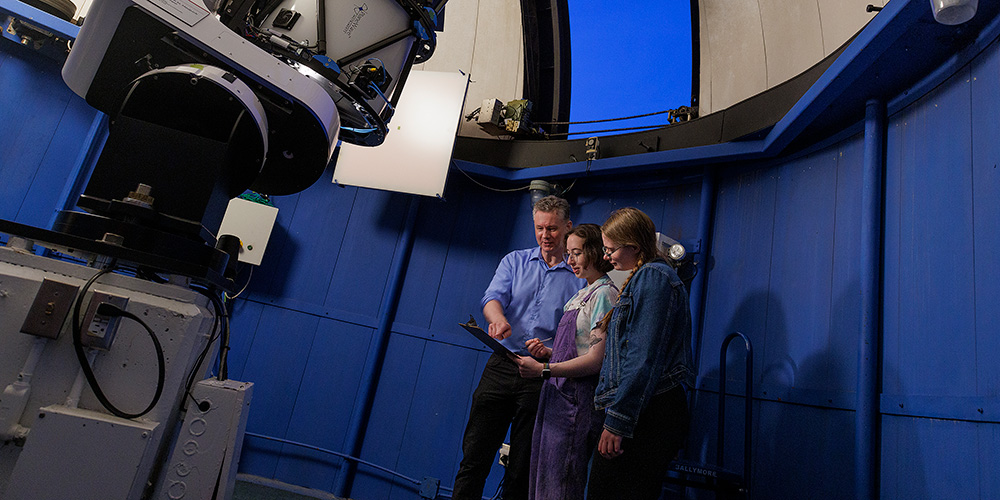Astrophysics Program

Why study Astrophysics?
Discover the scientific study of the universe beyond the Earth. Astrophysics deals primarily with the behaviours, physical properties, and dynamic processes of celestial objects and phenomena. Astrophysicists draw on physics and mathematics to study planets, stars, black holes, galaxies — even the evolution of the universe itself.
The Saint Mary’s approach
Saint Mary’s is a leader in astrophysics research and the only place you can study astrophysics east of Montreal. Learn from professors who are internationally recognized for their work, yet friendly enough to get to know you by name. Your degree will give you practical skills in advanced physics, complemented by a superb grounding in astrophysics. Saint Mary’s is home to a Canada Research Chair in Astronomy and the Institute for Computational Astrophysics (ICA).
Hands-on opportunities
As a Saint Mary’s undergraduate, you’ll get to dive in right away. Our students are often hired to assist with professors' ongoing research and may choose to pursue their original research through our honours program. Our faculty members regularly work with international partners, including collaborative projects with telescopes, space agencies, and particle accelerator facilities around the world. The program also offers opportunities for study abroad, paid summer placements and student awards and scholarships.
Sample courses offered:
- Foundations of Astrophysics: This first course in astrophysics emphasizes directly observable quantities such as the positions and motions of stars and the light they emit. Topics include a review of the celestial sphere, time in astronomy, astronomical catalogues, the two-body problem, dynamics of star clusters, stellar spectra, including emission and absorption lines, and the operation of telescopes. Students are assigned observing projects and trained to use the Burke-Gaffney Observatory.
- Observational Astronomy: The principles of modern ground-based and space-based observational astronomy are discussed. Emphasis is placed on data acquisition (from observations and archives) and analysis, as well as on the statistical treatment of data. As much as practical, the Burke-Gaffney Observatory is used for student projects.
- Properties of Stars: One of the major scientific achievements of the 20th Century was the quantitative understanding of stars. This course reviews these advances including the use of binary stars to determine stellar properties, spectral classification and the Boltzmann and Saha equations, radiative transfer and stellar atmospheres, the equations of stellar structure, and the interiors of hydrogen burning stars such as the Sun.
- Galaxies and Cosmology: This course deals with an extremely broad area of astrophysics covering seven or eight orders of magnitude in length scale. Topics include the kinematic properties of nearby stars, galactic rotation, spiral structure, and the formation of the Milky Way. Extragalactic topics include the classification of galaxies, galactic evolution and interaction, galaxy clusters, large-scale structure of the universe, and modern cosmology, including observational tests of various cosmological models.
Future career opportunities:
- Astrophysicist/Astronomer
- Computer programmer
- CGI animator
- Computational modeling